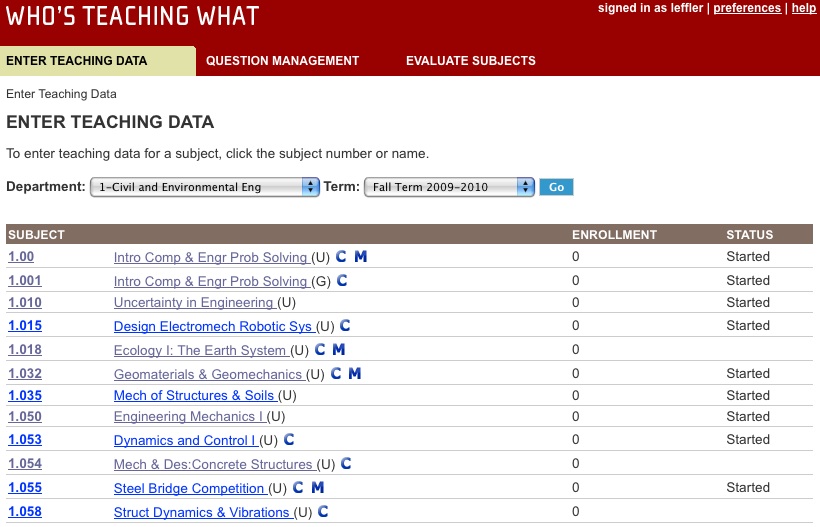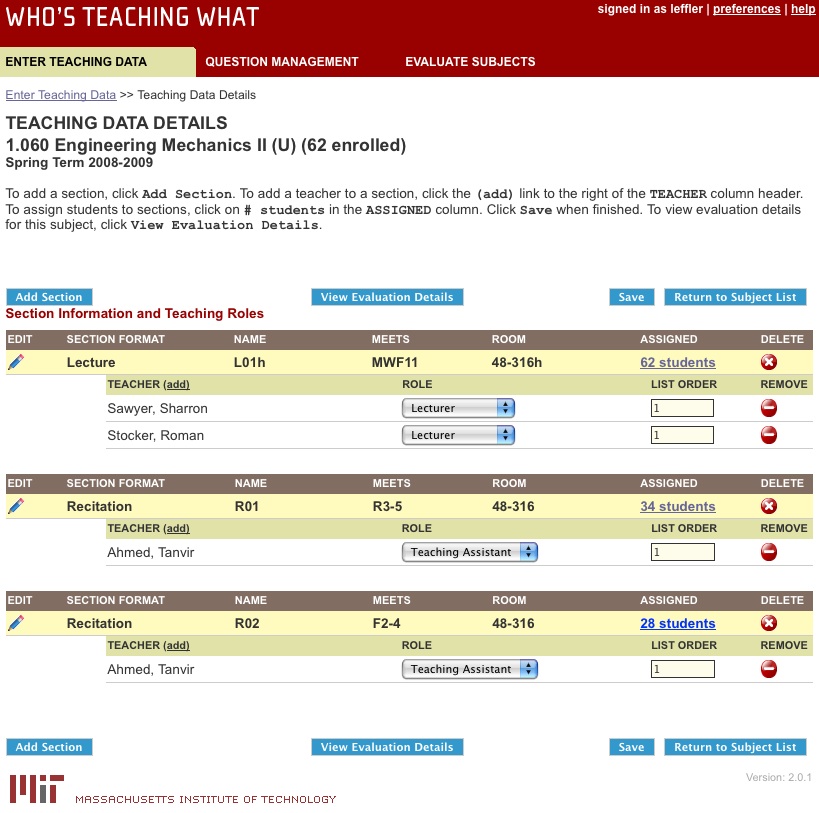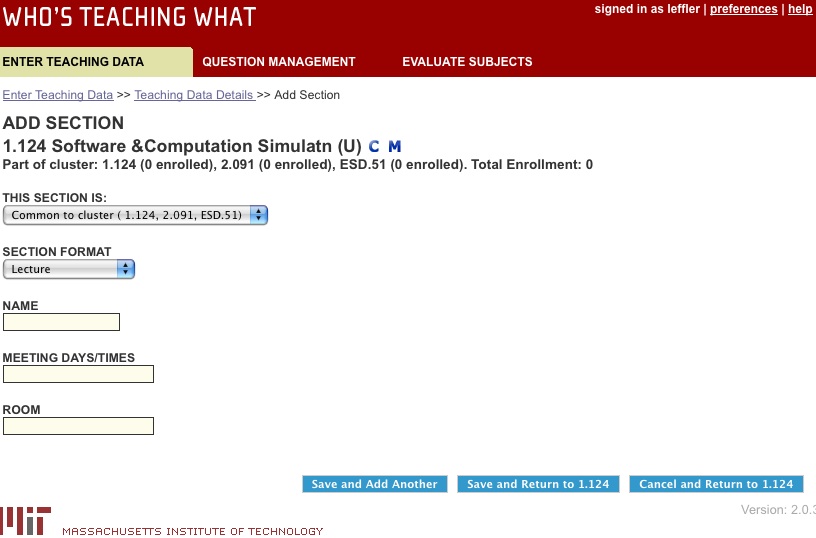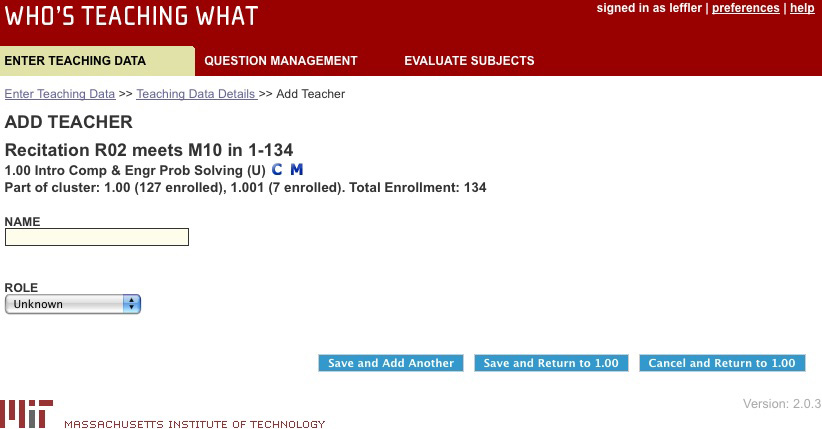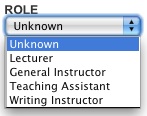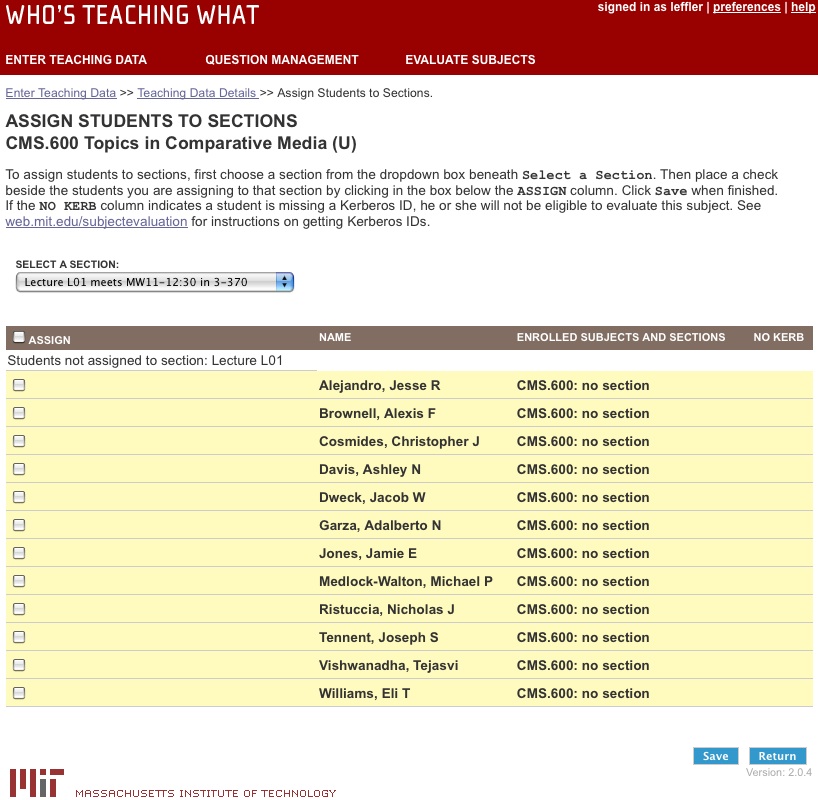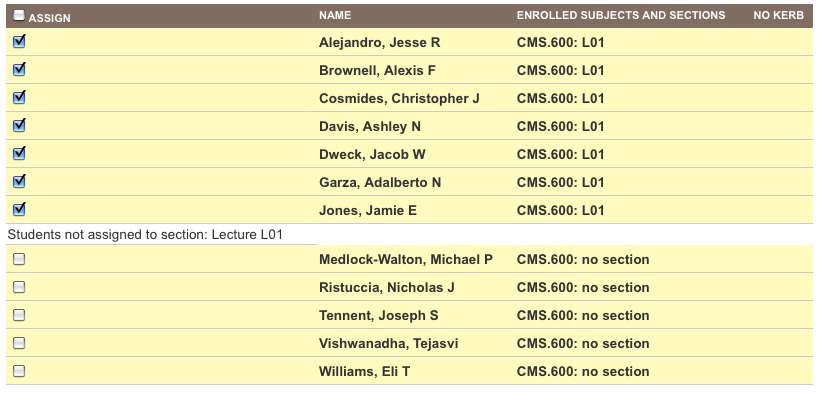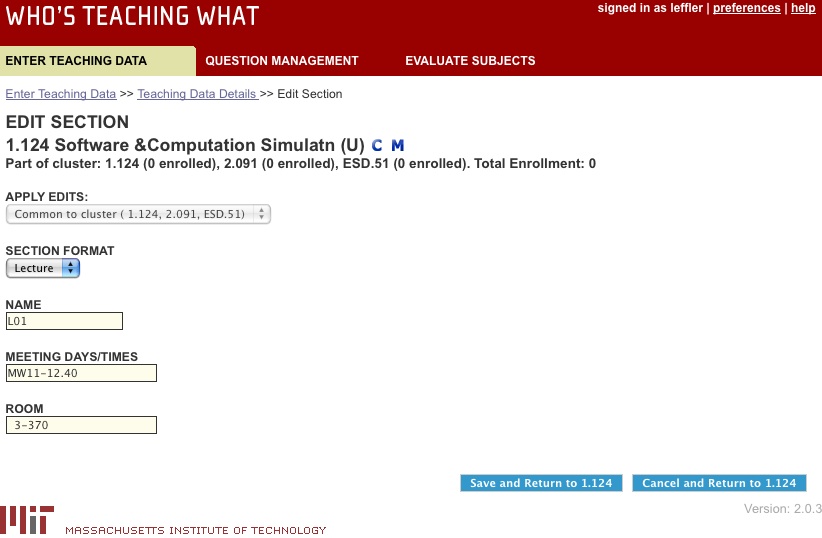The Enter Teaching Data page displays an interactive list of all the subjects offered within a given academic term for a specific department. This page allows access to a selected subject's teaching details (section, teacher and student enrollment information).
The subject list has three columns:
- Subject: Subjects display in ascending order by subject number. The name of the subject appears to the right of the subject number. If the subject is part of a cluster (e.g. a "joint" or "meets with" subject), a C will display after the subject name. If the subject is the master within the cluster (responsible for entering teaching data), an M will also display.
- Enrollment: The total number of students registered for credit or as listeners in the subject make up the enrollment number.
- Status: A status of "Started" will display when at least one teacher has been added to the subject. Otherwise, the status will be blank.
To access your department's subject list:
- Click the "Enter Teaching Data" tab at the top of the page. The color of the tab changes once you've selected it.
- Make sure the correct department displays in the Department box. If needed, select the correct term (the current term is the default) in the Term box.
- If you have made a change to department or term, click "Go." Subjects offered for the department and term selected will display. (If no changes are made, your subjects should already be displaying).
- To access the teaching details for a subject (where you'll add sections and teachers, assign students to sections, and edit any existing details) click the subject number or name. The Teaching Data Details page will display for the subject selected.






